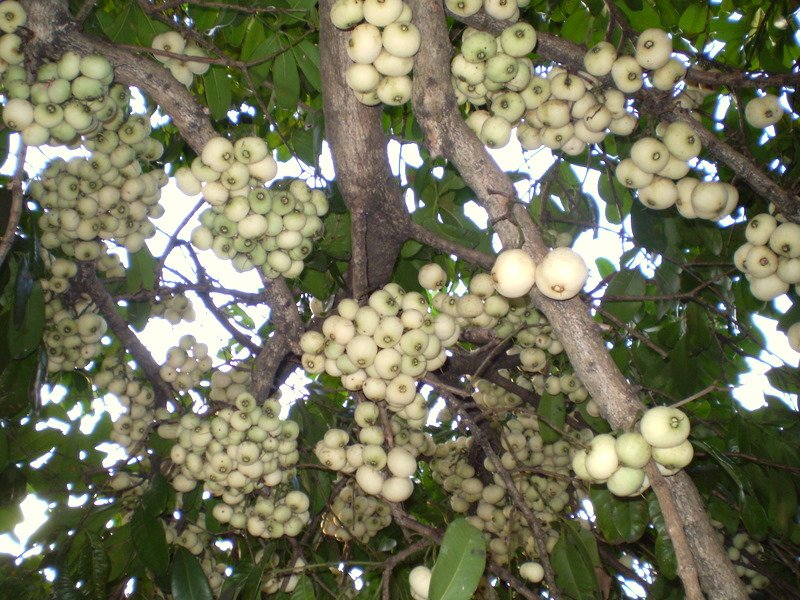What the giants ate

GONE FOREVER ARE those giant mammals and birds that once strode the Australian stage – the megafauna – but the plants they ate are with us still. Some of the large fruits in our forests only make sense if they had giant animals to swallow them and spread their seeds.
The lady apple tree (Syzygium suborbiculare) has tasty red fruits the size of small apples enclosing big round seeds. The northern woodlands they grow in have no animals they seem suited for. All fleshy fruits exist to persuade some animal to swallow the flesh and spread the seeds, but what eats these? Flying foxes eat many large fruits and carry the seeds short distances, but being colour-blind they would have difficulty seeing lady apple fruits against the large rounded leaves. Natural selection could not have produced the rich colour if bats were spreading the seeds. The giant bird Genyornis, last of the mihirungs, could have been the dispersal agent for this tree, until Aboriginal people took its place.
The native orange (Capparis mitchellii) of inland Australia also has big round fruits, although these are drab when ripe, with an alluring aroma. Fruit-eating birds don’t use smell to find food, so these fruits seem designed for mammals. Native oranges grow in many arid areas without flying foxes or possums, and they sport hooked spines that could tear flying fox wings. Their seeds could well have been moved by diprotodons and other large mammals.
Cycads (Macrozamia species) stand out as the plants most often linked to the megafauna. Biologists who monitored 800 cycad seeds found that, despite the red fleshy coatings, none was moved more than 5m from the plant. Brushtail possums relish the flesh but seldom carry a seed anywhere. Many crops fall from the plants and rot. One can easily imagine Genyornis swallowing and spreading the large seeds.

A rare southern cassowary fruit called ‘durroby’ (Syzygium moorei). (Image: Zaareo/Wikimedia)
Cassowaries are big enough to count as megafauna that survived. Some of the large fruits they eat in north Queensland, or very similar fruits, can be found as well in the rainforests of southern Queensland and northern New South Wales. Most of the southern trees with these large fruits are rare, as you would expect if they have lost their transport service. They imply that the Big Scrub and other subtropical rainforests had cassowaries tens of thousands of years ago.
Except in the north Queensland rainforests, humans have taken over as the main species spreading large fruit seeds. Indigenous Australians still enjoy lady apples, native oranges and Davidson’s plums. In restoration projects to bring back the Big Scrub, large-fruited trees are actively planted to give them a future.
READ MORE:




